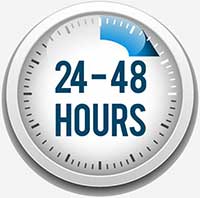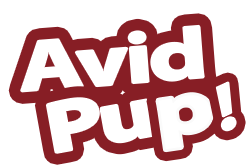
Neutering is a big part of modern dog ownership. While the choice to neuter your dog or not is entirely up to you, this procedure comes with many perks.
It helps keep the larger pet population under control, reduces bouts of spraying or marking, and can help avoid a slew of potential medical complications.
Neutered dogs reportedly live longer, too.
Despite all of the benefits that come with neutering, it’s still a medical procedure with some inherent risks.
Today’s veterinary medicine professionals make it as easy and safe as possible. But the level of care you provide afterward can make all the difference during recovery.
It’ll take some time for your dog to get back to its routine. Because most canines are neutered during their puppy years, getting them to stay calm and rested is easier said than done!
All dogs react differently to this procedure, but most are eager to get back to their daily activity. So, how soon can you walk your dog after neutering?
The Recovery Timeline
Like any other medical procedure, there’s no way to guarantee how your dog will react. Some recovery pretty quickly and are eager to start playing within a day!
However, others may take a bit longer to bounce back. Going under the knife is never easy, so expect some grogginess and confusion.
Typically, the recovery process takes up to two weeks. During that time, your dog will likely have a rough go of things.
Knowing what to expect will help you better understand what your pup is going through and what you can do to assist.
24 to 48 Hours After the Procedure

The first two days are the most challenging.
Immediately after surgery, your pup will likely show signs of discomfort and pain. While it can be heartbreaking to see, it’s normal. The incision is fresh, and your pup needs some time to recover.
Luckily, the effects of the anesthesia usually linger for the first 24 hours. As a result, most dogs will want nothing more than to sleep.
They’ll spend more time resting than average, which is a good thing. Don’t force your pooch to walk or get up. They may get up to eat, drink, and use the bathroom.
Let them outside briefly to do their business. Then, return them inside for more rest.
After about 48 hours, your dog will still show signs of drowsiness. However, there’s a good chance that they’ll be a little more present.
Some pups might try to stretch, run around, and be active. Try to discourage that as much as possible! The wounds are still fresh, so there’s a considerable risk of infection.
Take things easy and follow all the directions your vet gave you.
The Three-Day Follow-Up
Most veterinarians will schedule a follow-up appointment three days after the procedure. This is when they’ll take a look at the stitches and make sure that everything is healing nicely.
Even if your pup gets a good bill of health, keep taking things easy. Your bet will probably stress the importance of limited movement.
However, they can also give you some tips on how to ease your dog back into physical activity.
They might recommend taking short walks around the house or brief moments of play here and there. Your pooch will be more alert at this point.
Some will try to play and have fun, too. There’s nothing wrong with that, but you have to ensure that your dog isn’t over-exerting itself.
The risk of tearing those stitches open is still present, so you want to ensure that they’re relatively calm.
The 10-Day Checkup

Over the next week or so, you can continue with light play and walks inside.
A few minutes outside in a controlled environment is fine, too. This week-long period is when the stitches and wound will heal the most.
The last thing you want to do is set your dog’s recovery process back. Be gentle, calm, and easy-going to avoid any problems.
About ten days after the procedure, you’ll need to go back to your vet. This is the final follow-up appointment. If everything is healing as it should, your vet should give you the all-clear to return to normal.
Some may recommend waiting a few extra days for additional healing. Whatever the case may be, heed your vet’s advice.
Once you get the green light, you can start going back to regular walks.
We don’t recommend going all-in right off the bat. Your dog just spent about two weeks taking things easy.

They’re not in the best physical condition to start going on long walks or runs just yet.
Ease into it! Start with shorter walks and increase the length until you’re back to where they were pre-procedure. It may take a few days or weeks to get there.
Don’t rush your pup! Give them plenty of time to regain their strength.
The Risks of Going on Walks During Recovery
There are a couple of issues to be wary of during recovery. Jumping straight back to action can be detrimental to the recovery process.
The biggest concern is tearing the stitches. Your pup essentially has an open wound in a very vulnerable area.
Stretching and over-exertion can cause the stitches to break free, opening the injury once again. That can happen at any point during the recovery phase. It can even occur after partial healing!
Another significant risk is infection. Going outside exposes the wound to all kinds of bacteria. It doesn’t take much for infections to form.
Depending on the severity of the issue, you’re looking at discharge, extended healing time, or even severe illness!
It’s best to take things easy for a couple of weeks rather than rushing back into action. Going on long walks isn’t worth the headache!
Related read: Tips for Walking your Dog in Hot Weather
5 Recovery Tips You Need to Follow
While neutering is common, it’s still an invasive and painful procedure. Giving your dog time to recover and heal is paramount. Here are some things you can do to make the healing process as easy as possible.
1. – Take Things Easy
We can’t say this enough: Take things easy!
It can be difficult for young puppies to stay calm, but you must stop them from being rambunctious.
There are several ways to do this. You can provide mental stimulation, shower them with tons of attention, or divert their energy to a play toy.
If all else fails, you can always put them in a kennel to limit physical movement.
2. – Keep the Incision Site Clean
Your vet will probably provide you with some detailed care instructions on keeping the incision site clean. Follow them to a tee!
Usually, cleaning involves wiping away discharge and dried crusty bits. Some may request that you apply ointments. Use the cleaning time as an opportunity to monitor recovery.
If anything seems off, don’t hesitate to contact your vet.
3. – Provide All Prescribed Medications
In addition to cleaning the wound, provide any medications your vet recommends. Not all dogs will come home with prescriptions. Vets typically give them on a case-by-case basis.
For example, you might have some to reduce anxiety, one that acts as a mild sedative to keep your dog calm, or one that fights off potential infection.
You’ll receive clear instructions on when and how to give them to your dog. Make sure to follow your vet’s advice for smooth sailing.
4. – Find Things to Do Inside
It can be a nightmare trying to stay occupied inside. Find ways that your dog can get rid of pent-up energy without risking the recovery process.
Try using mental stimulation toys or going on leashed walks inside your house.
It’s not going to take the place of full-blown walks. But, those activities can scratch the itch to exercise without the added risks.
5. – Keep a Watchful Eye
Finally, keep a close eye on your dog! Many puppies will try to bite or lick the wound. Not only that but you’d be surprised by what bored puppies will do even when they’re inside the house.
We recommend taking some time off so that you can be there every day of the recovery process.
Please make sure they’re safe at all times and don’t be afraid to use the kennel or an Elizabethan cone to prevent them from touching the stitches.
Conclusion
The first few days of recovery after neutering can be challenging, but the difficult times are well worth it. Neutering can do a lot to improve your dog’s health and avoid potential behavioral problems.
As long as you’re patient and vigilant, your dog will be back to normal in no time!
Also Read: When Can Puppies Go Outside for the First Time?

